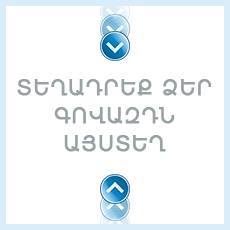Դիպլոմային The Translation Transformation In The Translation Of F. Scott Fitzgerald’s “The Great Gatsby”
Բովանդակություն
Introduction
Chapter I. The Problem of Equivalence in Translation
1.1. The Concept of Translation
1.2. The Notion of Equivalent Translation
Chapter II. The Classification of Translation Transformations
2.1. The Main Types of Translation Transformations
2.2. The Translation Analysis of the Novel “The Great Gatsby”
Conclusion
Հատված
According to the well-known definition of translation proposed by the structural linguist Roman Jakobson, the intralingual translation or rewording is the interpretation of verbal signs by means of other signs of the same language; the interlingual translation or translation proper is the interpretation of verbal signs by means of some other language; and the intersemiotic translation or transmutation is the interpretation of verbal signs by means of signs of non-verbal sign systems. (Jakobson, 1959). Apart from being a textual operation, translation is also the result of the cognitive processing carried out by the translator. The analysis of the translation process entails a lot of difficulties.
The competence that underlies the translator’s work and enables him to carry out the cognitive operations necessary for the adequate unfolding of the translation process is known as translation competence.
By saying “translation competence” we understand the knowledge and skills the translator must possess in order to carry out the translation process. (Bell, 1991).
Translatability is one of the essential features of the works to be translated. The translator’s role is difficult because he has to utilize his own interpretation of the work so as to create a complete portrait of the original text. This process may require subtle alterations to both the language and the structure.
Generally the adaptations offering a strictly word-for-word substitution from one language to another are not successful.
The successful translator must be a reader who travels back and forth both in and between the text of the original and the text of his own. Still, he must stay as close to both the letter and the spirit of the original as possible.
Recapturing the voice, rhythm, dialogue, cultural meaning and tense without compromising the spirit of the translated work requires special translation skills that will help the translator to produce an excellent translation and transmit the author’s message, style and tone.
Գրականության ցանկ
1. André Lefevere “Translation / History / Culture. A Sourcebook,” Routledge, New York, 1992.
2. Brenner Gail “Webster’s New World American Idioms Dictionary,” Gardners Books, Eastbourne, 2003.
3. Bronwen Martin and Felizitas Ringham “Dictionary of Semiotics,” Cassell, London and New York, 2000.
4. Chitra Fernando “Idioms and Idiomaticity,” Oxford University Press, Oxford, 1996.
5. Christina Schäffner “Translation and Norms,” Multilingual Matters Ltd., Toronto, 1999.
6. David Christal “English as a Global Language,” Cambridge University Press, New York, 2003.
7. Donald C. Kiraly “Pathways to Translation. Pedagogy and Process,” Kent State University Press, Kent, 1995.
8. Douglas Robinson “Becoming a Translator. An Introduction to the Theory and Practice of Translation,” Routledge, London and New York, 2005.
9. Francis Scott Fitzgerald “The Great Gatsby,” Wordsworth Classics, Ware, 1993.
10. Harold Bloom “Bloom’s Guides: The Great Gatsby,” Infobase Publishing, 2006.
11. Jenny Williams and Andrew Chesterman “The Map: A Beginner’s Guide to Doing Research in Translation Studies,” St. Jerome Publishing, Manchester, 2002.

